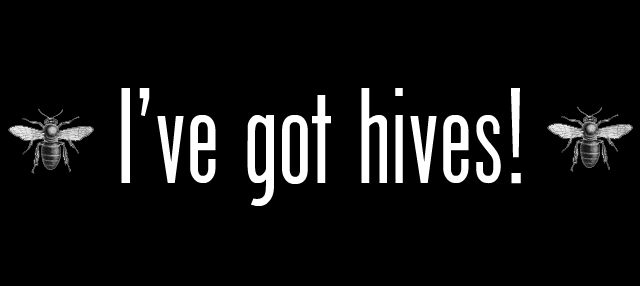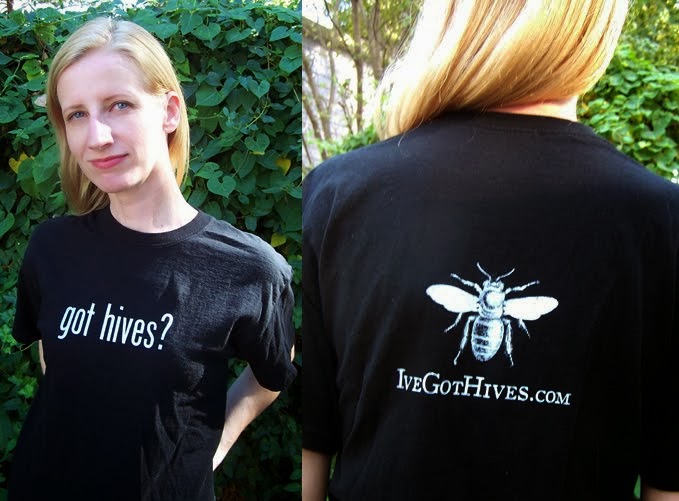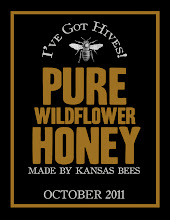
Colony Collapse Disorder (CCD) is not new. You've probably heard of it before, when it made headlines here and there between 2004 and 2006. Lately, though, there hasn't really been much noise made about it. I guess that problem has been solved, right?
The fact is that CCD is still going strong. In short, CCD is a simultaneous global die-off, and in many cases, disappearance of entire colonies of honeybees. Considering how vital honeybees are to agriculture, their decline is having, and will continue to have, profound effects on our food crops. The numbers differ, but something in the area of 76% of commercial crops are dependent on bees for their pollination. Without bees, these crops would produce such low yields that they would become impossible to farm.
There have been many theories put forward about the causes of CCD: The natural, such as Varroa mites, parasites that attach themselves to bee larvae and feed on their blood; Nosema, another parasite which causes damage to the bees' digestive system; foulbrood, which is caused by a bacteria that kills the larvae; viruses, chalkbrood, hive beetles, wax moths, and tracheal mites; and the unnatural, such as cellular transciever towers' and cell phones' electromagnetic fields, foreign sabotage, genetically-modified crops, pesticides, and plain old bad beekeeping.
With so many possible culprits, CCD has been considered a mystery by beekeepers, scientists and the media for over a decade. And, indeed, the cause may be a combination of factors. But one possible cause stands out above the rest: pesticides -- in particular a relatively new class of pesticide called neonicotinoids. For well over half a century, topical pesticides were sprayed onto plants from the ground and the air, blanketing them with poisons, and, in the process, damaging the air and water. In the late 1990s, after decades of pressure to develop more "eco-friendly" pesticides, the chemical company Bayer began marketing neonicotinoids, which are systemic insecticides containing synthesized nicotine, and applied directly to seeds before they are planted, thereby incorporating a powerful neurotoxin into the plant itself, and eliminating the need to spray poisons. A clever idea, but one that has proven disastrous to the honeybees.
Shortly after the neonicotinoids came into widespread use, the populations of honeybees began to decline at a shocking rate in the U.S. and Canada, the U.K., and throughout Europe, most notably in France, Germany and Italy. Brazil, Chile, India, China, Taiwan and Greece have also seen a decline. Commercial and hobbyist beekeepers alike reported staggering losses in their colonies - many of which completely disappeared, leaving no traces of dead bees behind. People have been keeping bees for thousands of years, and any beekeeper can tell you that normal, healthy bees simply don't behave that way. This bizarre phenomenon became known as Colony Collapse Disorder, and was (almost) immediately recognized as a potential disaster to agriculture worldwide. But much of the "mystery" surrounding CCD is due to misleading pseudoscience that has been put forth by the chemical companies themselves. When it became more and more apparent that the toxins in neonicotinoids were damaging insects' central nervous systems (as they were designed to do), Bayer released the results of their own tests, which showed that the amounts of the chemicals present in samples were not enough to kill honeybees. Therefore, they reasoned, CCD must be due to some other, natural cause, or a combination of them. But the chemical company didn't bother to test whether the concentrations of neonicotinoids in pollen collected and stored in the hive to feed young bees was having any long-term effects on the colonies as a whole, or to measure the cumulative damage done to subsequent generations of bees exposed to the chemicals throughout their entire lives.
Indeed, the very term "Colony Collapse Disorder" is false and misleading, since a "disorder" implies a natural phenomenon, not a coordinated attack on their nervous systems by a deliberate action. Honeybees have always been subject to diseases and parasites, but before the use of neonicotinoids, beekeepers had never seen such dramatic, simultaneous, worldwide losses in their populations. There is good reason to suspect that continuing damage to the bees' central nervous systems causes them to lose their capacity for navigation, so that when they leave the hive to forage for food, they become lost and cannot find their way back, and that this is why so many entire colonies of bees have vanished without a trace, instead of just dying in and around the hives. Moreover, when a colony is wiped out by a disease or parasites, it almost always happens during the winter, but the ongoing collapse of honeybee colonies has been occurring during the summer months - the height of the bees' foraging season.
Of course, honeybees were not the intended target of these insecticides, but they have clearly been shown to be affected. Neonicotinoids don't differentiate between unwanted pests and beneficial allies, and their continued use presents an obvious danger not only to the honeybees, but ultimately, to agriculture as a whole. In 1999, France took a dramatic and necessary step: in response to beekepers' protests, and confronted with compelling scientific evidence of the insecticides' role in CCD, the Minister of Agriculture banned the use of "Gaucho" (a neonicotinoid insecticide produced by Bayer) on sunflowers, and then, in 2004, extended the ban to its use on corn. Germany and Italy followed suit soon after. The results? In the summer of 2009, Italy reported only one collapsed colony - in an area where leftover Gaucho-treated seeds had been planted. France and Germany also reported that their honeybees are back again and thriving. During the years before the ban, while neonicotinoid-treated corn was being grown, beekeepers had been losing 30 to 40 percent of their total number of hives. As William of Ockham concluded, the simplest solution is usually the correct one.
There have been continuing studies, and lawsuits, over the use of neonicotinoids in the United States, but at present, the EPA has done very little about it - instead relying on Bayer's specious claims that their product presents no danger to bees. Funding was promised for a comprehensive study of the insecticides' effects on honeybees in 2008, but so far, that money hasn't materialized. This year, the EPA has begun embarking on some minor, but long overdue, studies of the effects of commercial use of neonicotinoids, even while downplaying their possible role in CCD, but their official stance has remained the same: that the causes of CCD are still unknown. The use of neonicotinoids in the U.S. is still unregulated, and there are literally hundreds of varieties sold to both commercial farmers and home gardeners (the most widely used being "Admire," made by Bayer). The bees are continuing to decline, and the chemical, pharmaceutical and agribusiness lobbies are as powerful as ever. If, in fact, nicotine-based systemic insecticides are largely to blame for CCD, then without funding to study their range of detrimental effects relevant to bees, and with no limitations placed on their use, the outcome will be as unhappy as it is easy to predict.
What you can do:
- Visit the National Resource Defense Council's website:
- Contact the head of the EPA:
Ariel Rios Building
1200 Pennsylvania Ave. NW
Washington, D.C. 20460
(202) 564-4700
- Contact your senators and representatives
Tell them what needs to be done:
- The use of nicotine-based pesticides must be suspended until third-party testing can verify their safety at all levels, including sublethal
- The pesticide approval process must be investigated in the context of antitrust violations
- Congress must conduct an independent investigation into the economic losses suffered by both beekeepers and farmers due to nicotine insecticides
I've tried to keep this article as brief as possible while giving an overview of CCD. To truly explore the issue would take volumes, and indeed, a vast amout has been written on the subject. Here are a few links with more information:
Wikipedia, Diseases of the Honeybee:
http://en.wikipedia.org/wiki/Diseases_of_the_honeybee
Information about neonicotinoids and how to avoid their use:
http://www.naturalnews.com/023679.html
The EPA's site, with dozens of articles about CCD and insecticides:
http://nlquery.epa.gov/epasearch/epasearch?querytext=colony+collapse&fld=&areaname=&areacontacts=http%3A%2F%2Fwww.epa.gov%2Fepahome%2Fcomments.htm&areasearchurl=&result_template=epafiles_default.xsl&filter=sample4filt.hts
Inspiring news from Italy, post-ban:
http://www.youris.com/Environment/Bees/Bees_restored_to_health_in_Italy_after_this_springs_neonicotinoidfree_maize_sowing.kl
The information contained in this article has been compiled by me from many, often contradictory, sources, and represents my understanding of the current state of CCD. I am not an expert on the subject, but it is my intention to present information that is supported by both scientific data and reasonable hypothesis, and to raise awareness of the enormity of the issue.
-J








